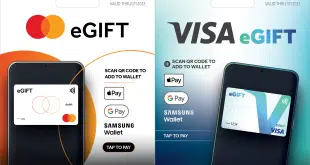ATM surcharges often make the news when they hit a sensitive threshold such as $3, but the flip side of the story is the growth of options banks and credit unions offer customers to avoid paying the fees. According to newly released results from the Pulse electronic funds transfer network's 2008 Debit Issuer Study, some 56% of responding issuers belong to a surcharge-free ATM network, and nearly half offer surcharge reimbursements. Houston-based Pulse, a unit of Discover Financial Services, didn't ask about surcharge-free network participation in its earlier debit surveys and thus does not have comparison figures. But reports from surcharge-free networks that disclose their ATM counts, such as U.S. Bancorp's MoneyPass, Cardtronics Inc.'s Allpoint, and the Co-op network for credit unions, indicate steadily rising membership (Digital Transactions News, Aug. 13). The implication is that the push by financial institutions for ever-higher ATM revenues from non-customers is being offset at least somewhat by customers' expectations of getting cash free, even at ATMs not owned by the bank or credit union that holds their checking account. Broken down by type of issuing institution, 84% of credit unions belong to a surcharge-free network compared with 47% of large banks and only 33% of community banks. Some 44% of issuers surveyed selectively reimburse ATM surcharges to some cardholders while 3% reimburse all cardholders. Large banks were the biggest reimbursers?60% reported reimbursing some cardholders, though none reimbursed all cardholders. Forty percent of large banks do not reimburse. Some 68% of credit unions do not reimburse ATM surcharges, but 11% reimburse all cardholders and 21% selectively reimburse. Like their larger brethren, no community banks reported reimbursing all cardholders; 42% reimburse some and 58% do not reimburse at all. Of the institutions that reimburse ATM surcharges, 45% limit total per-cardholder monthly payments. Pulse executive vice president Cindy Ballard says the results show financial institutions are employing varied tactics in dealing with the surcharge issue. “There is a lot of differentiation,” she tells Digital Transactions News. The results announced today represent the second batch of data to be released publicly from the 2008 study conducted in February (Digital Transactions News, May 1). The survey, done for Pulse by Oliver Wyman Group, queried 64 financial institutions that collectively issue 74.2 million debit cards, some 28% of the U.S. total. The study says 10% of respondents offer contactless cards and 35% plan to, while 55% have no such plans. Oliver Wyman estimates 2.4% of all debit cards, or 6.3 million, have contactless capabilities. Issuers gave a range of reasons for not offering them, including low demand, lack of merchant acceptance, and concerns about recovering their investments. “There are many challenges to those cards,” Ballard said. Mobile banking also remains virgin territory. Only 15% of debit card-issuing institutions offer it, though 28% said they plan to offer it soon. Plans and implementation vary by segment. Among large banks, 24% offer mobile banking, 31% plan to offer it soon and 45% have no immediate plans to offer it. Only 5% of credit unions currently offer mobile banking, though 37% plan to offer it while 58% have no such plans. Among community banks, just 8% offer mobile banking, 17% are planning it and 75% have no immediate plans. Mobile payments, meanwhile, “is largely in the research phase,” says a study summary. Overall, 56% of issuers are considering the service. In the prepaid market, some 61% of debit issuers sell open-loop (general-purpose) gift cards and another 16% plan to get into the market, a market the Federal Reserve estimated at $13.3 billion in 2006. Issuers also expect their gift card operations will grow by 32% this year. But the cards aren't very big sellers: The average branch sold just 297 gift cards in all of 2007, earning just $539 in fee revenue. Ballard adds that just 1% of account holders purchase a gift card from their financial institution. Many banks and credit-union executives told Oliver Wyman they consider other forms of prepaid cards, including payroll cards and health savings account cards, to be better business opportunities. The study also looked at debit card rewards and decoupled debit, the latter of which centers on a debit card issued by an entity other than the financial institution that holds the cardholder's checking account and for purchases draws funds from that account via the automated clearing house. Capital One Financial Corp. and HSBC Bank USA with partner Tempo Payments Inc. are the primary players in this nascent market. The study says that among issuers that have tracked decoupled debit, only 0.0005% of cardholders have such a card. Debit rewards programs are up significantly as issuers try to spur transaction volume and overall program activity. Fifty-one percent of respondents in the 2008 study offered rewards programs compared with 37% in 2006. Another 23% said they are considering rewards. Cash rewards are the fastest-growing type?19% of issuers with rewards programs said they offer issuer-funded cash rewards compared with 5% in 2006; and 23% offer merchant-funded rewards, up from 11% in 2006. Points programs remain the most popular, offered by 58% of issuers with rewards programs, unchanged from 2006. Reflecting the pullbacks by airlines, only 6% of debit issuers with rewards programs offer airline miles, down from 16% in 2006. New to the survey are charity-directed rewards, offered by 10% of issuers with reward programs. Cardholders like cash more than any other reward. Some 83% and 43% of those eligible for merchant-funded and issuer-funded cash rewards, respectively, are actually enrolled in the programs. Below that, enrollment versus eligibility drops down to 18% for points programs, 9% for charities, and just 1% for airline miles. “Because cardholder engagement remains somewhat of a challenge, some of the issuers are considering revamping or relaunching the programs,” says Ballard.
Check Also
Eye on E-Commerce: Weee! Adds Online SNAP/EBT; Synchrony’s Adobe Commerce Integration
Online Asian grocer Weee! is adding SNAP/EBT acceptance to its site via a partnership with …




